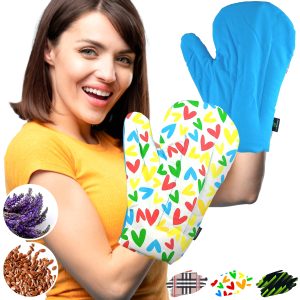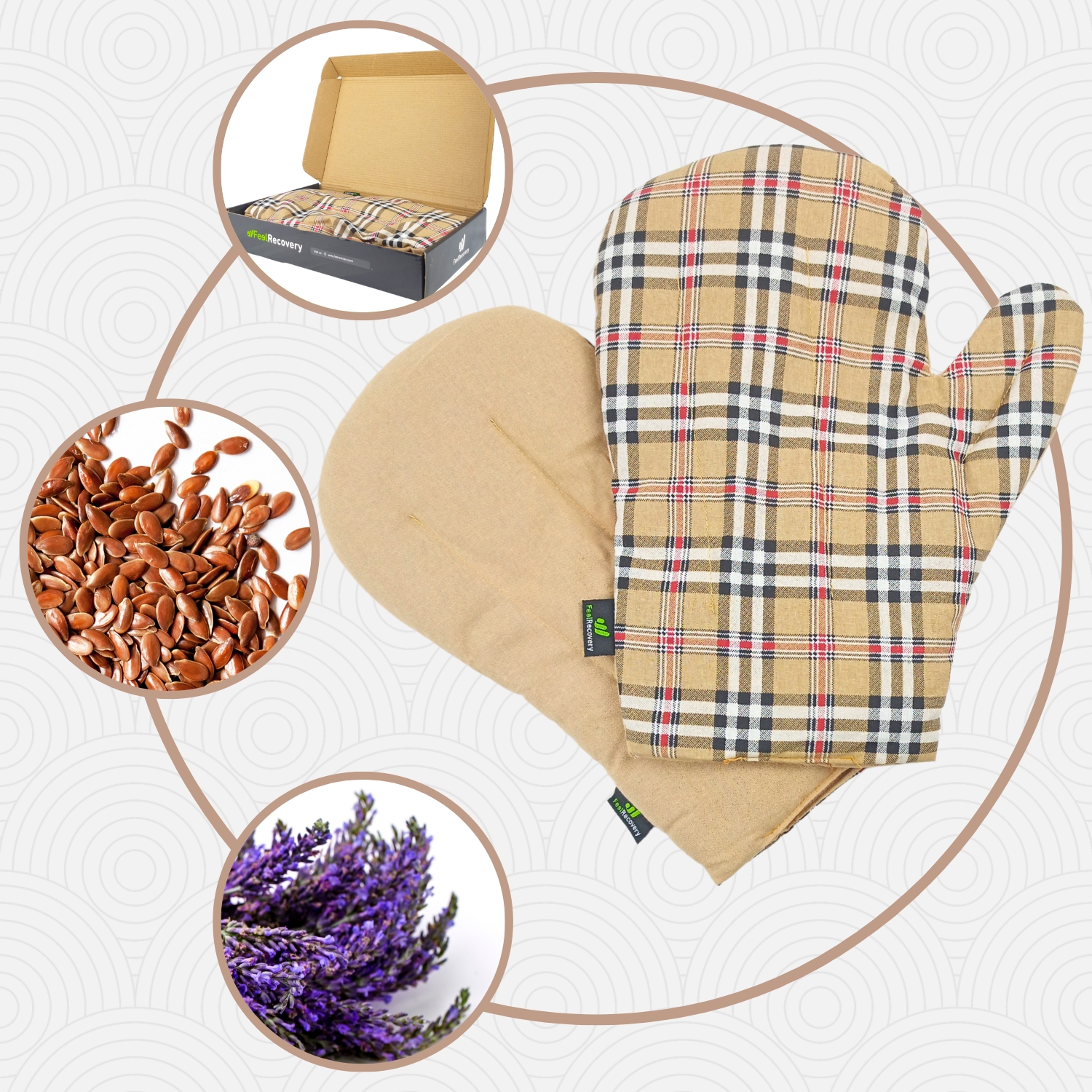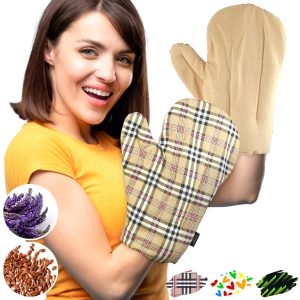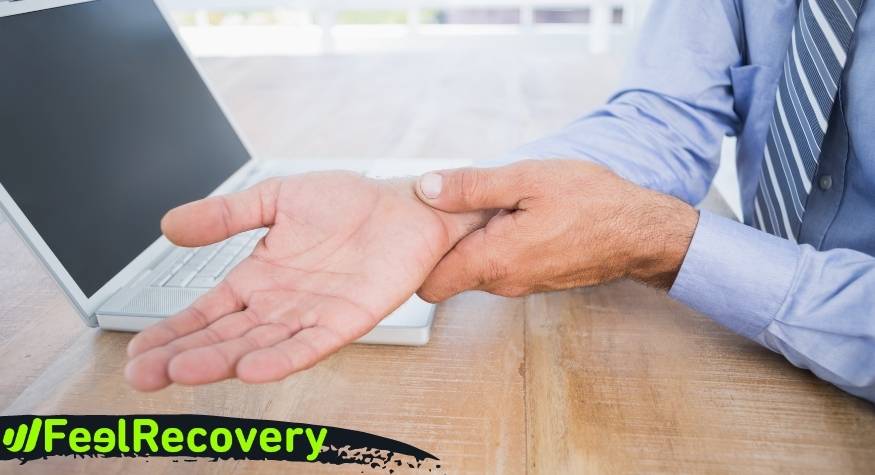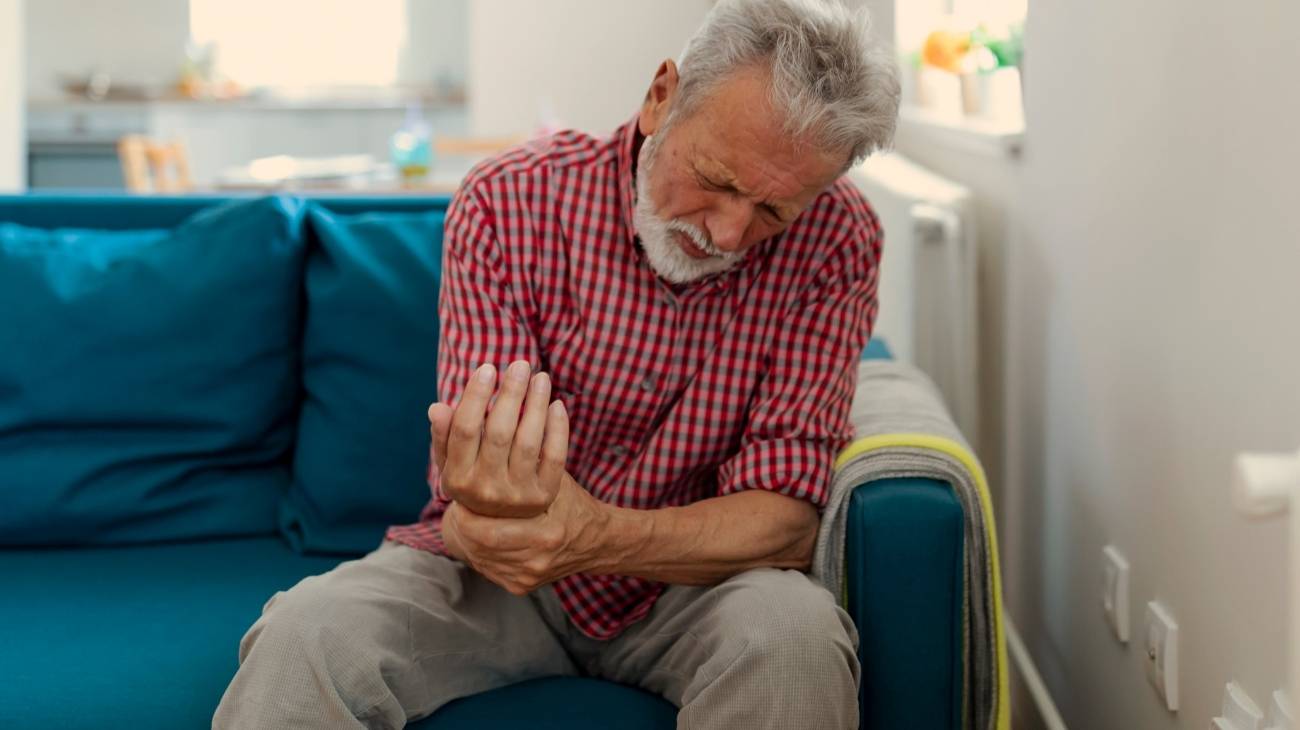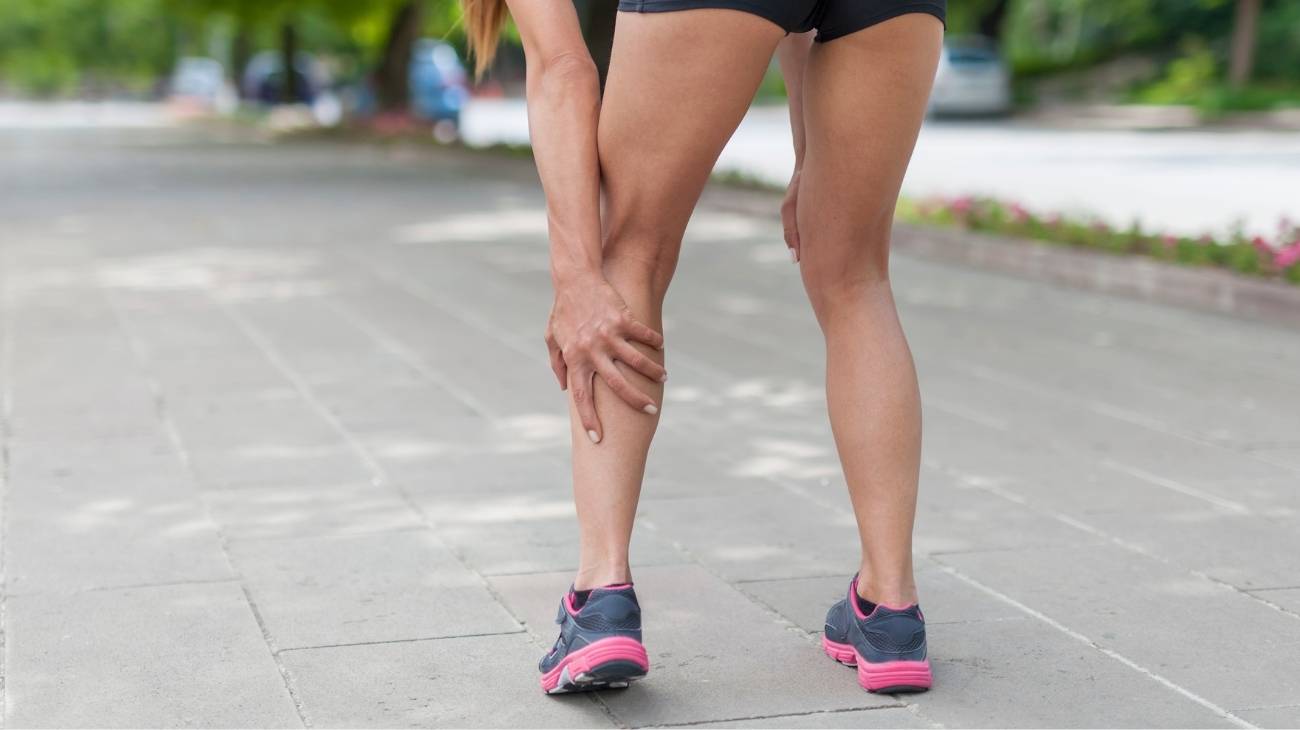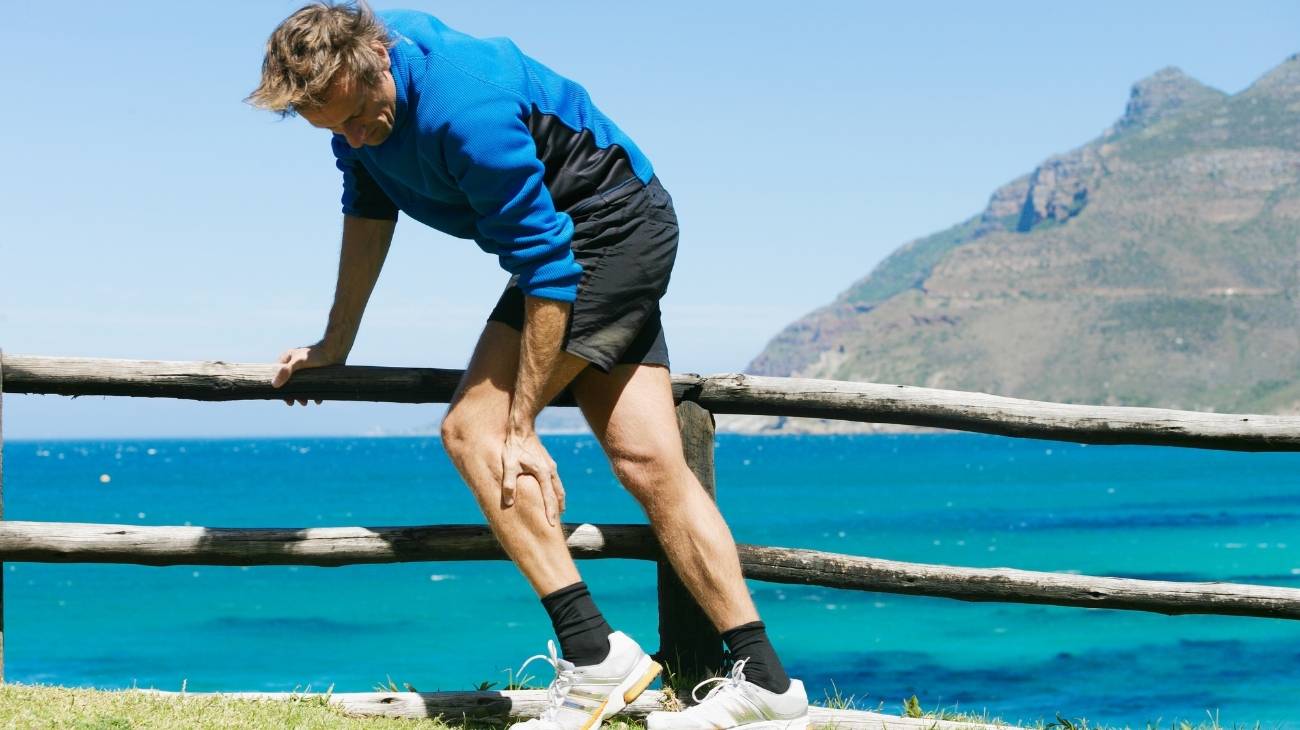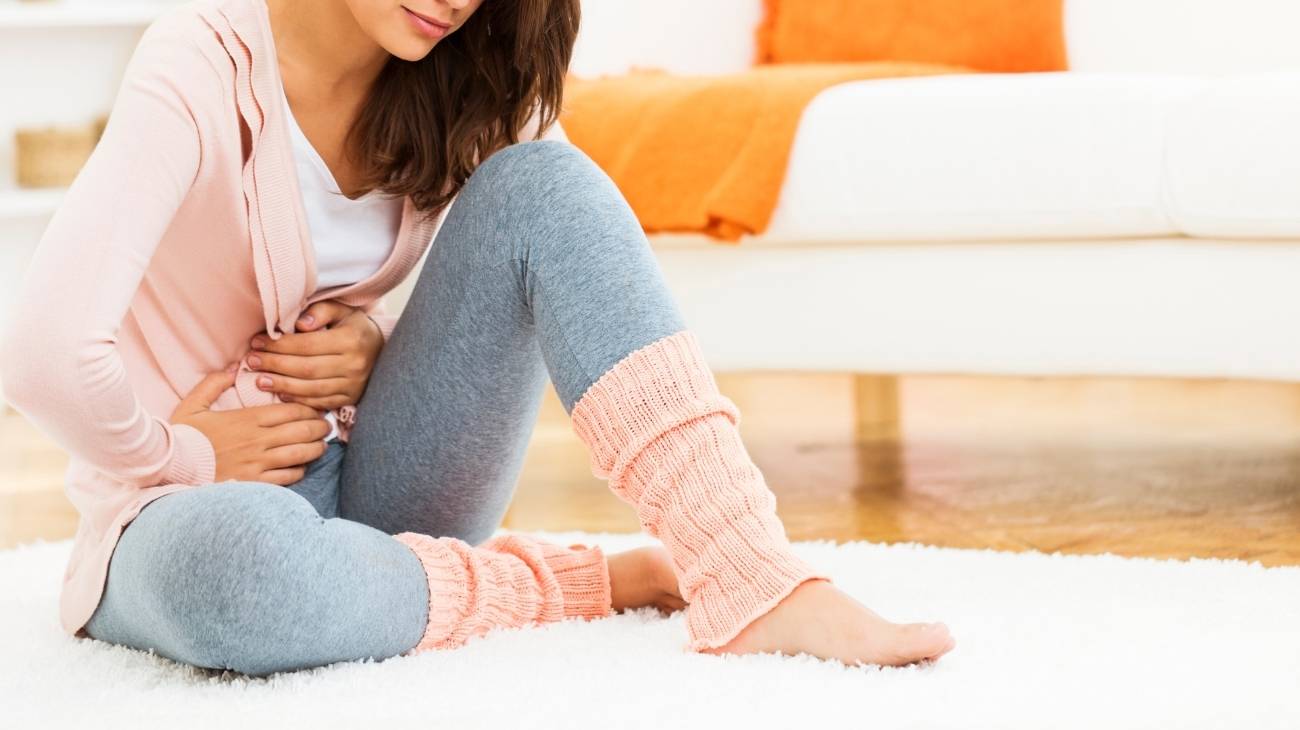- What are muscle cramps in hands and fingers?
- What are the causes of involuntary muscle spasms in hands and fingers?
- Best products for hands and fingers cramps
- Main symptoms associated with muscle cramps of the hands and fingers
- How to relieve pain and improve symptoms due to muscle cramps in hands and fingers?
- What are the most effective prevention methods for hand and finger muscle spasms?
While it is true, sudden cramps or spasms affect people of all ages, older and middle-aged adults as well as young people. They usually occur in the legs and feet of patients, causing pain for a prolonged period of time. However, such contractions also occur in the hands and fingers.
But, since it is less common, individuals are interested in knowing what this type of muscle cramps is. Consequently, here we will define what they are, what causes them to occur in these areas, as well as their symptoms, their treatment and how to prevent them.
What are muscle cramps in hands and fingers?
In general terms, muscle spasms are contractures that appear in any muscle or group of muscles suddenly, abruptly and involuntarily. They tend to stiffen and bulge the affected area, causing pain and swelling, which prevents relaxation for several minutes.
Specifically, muscle cramps in hands and fingers refer to a cramping that occurs in these parts of the body and, although they are brief, they can be very intense and painful. In addition, in various circumstances, this condition is accompanied by a sensation of heat and causes temporary immobility of the hand or finger that receives the trauma.
What are the causes of involuntary muscle spasms in hands and fingers?
Specifically, these muscle contractions do not have a clear cause, as it is a condition that encompasses different factors and motives that vary from patient to patient. However, there are some specific causes of involuntary muscle spasms in the hands and/or fingers, which refer to the following:
- The fact that the body does not have enough fluids or is in a state of dehydration, by nature, generates cramps in the muscles and one of the most common is hand spasms.
- Abnormal levels of minerals or electrolytes in the body also cause hand cramps.
- Vitamin D deficiency is another cause of sudden spasms in the hand or finger area. This vitamin acts directly on the muscles for their proper functioning.
- If there is hyperventilation in the body that triggers a temporary lack of calcium availability in the body, intense contractions of the hands are also likely to occur.
- Some brain disorders cause cramps, such as Parkinson's disease, Huntington's disease, multiple sclerosis and dystonia.
- Patients with chronic kidney disease and/or undergoing dialysis also suffer from cramps in the hands and fingers continuously.
- Mononeuropathy (damage to a single nerve or group of nerves) and polyneuropathy (contusion of multiple nerves) present in nerve(s) connected to the muscles of the hands or forearm cause spasms.
- Hyperthyroidism, hypothyroidism or any thyroid disorder also causes cramps in the hands and fingers.
- Certain medications or drugs have side effects that cause muscle contractions.
- If the sufferer has undergone surgery in an area close to a nerve, it is possible that it has become inflamed and therefore the spasms are externalised.
- If the patient has suffered a haemorrhage or cerebral infarction, strong contractions may also occur in the hand, due to damage to the area responsible for the sensitivity of this limb.
Best products for hands and fingers cramps
Bestseller
-
Acupressure Mat and Pillow (Black/Gray)
$49.95 -
Acupressure Mat and Pillow (Green/Navy)
$49.95 -
Acupressure Mat and Pillow (Pink/Bordeaux)
$49.95 -
Foot Massage Roller for Plantar Fasciitis (Black)
$19.95 -
Foot Massage Roller for Plantar Fasciitis (Green)
$19.95 -
Foot Massage Roller for Plantar Fasciitis (Pink)
$19.95 -
Microwave Arthritis Gloves (2 Mittens) (Hearts)
$29.95 -
Microwave Arthritis Gloves (2 Mittens) (Oxford)
$29.95 -
Microwaveable Heating Pad for Pain Relief (Hearts)
$19.95 -
Microwaveable Heating Pad for Pain Relief (Oxford)
$19.95 -
Microwaveable Heating Pad for Pain Relief (Sport)
$19.95 -
Wrist Brace (Black/Gray)
$19.95 -
Wrist Brace (Green/Navy)
$19.95 -
Wrist Brace (Pink/Bordeaux)
$19.95
Main symptoms associated with muscle cramps of the hands and fingers
When a muscle spasm is triggered in the hands and/or fingers, a series of symptoms are externalised that alter the functioning of these extremities of the human body and reveal intense pain, mainly.
It is therefore advisable for patients to know the main signs or indications so that they can identify what they are experiencing and seek an appropriate solution to attenuate the pathological state they have entered.
These are listed below:
- Muscle weakness or reduced strength in one or more muscles connected to these parts of the body.
- Tingling, tingling sensation or numbness in the affected area.
- Fatigue. Which basically means a lack of energy and motivation to do anything.
- Fasciculations which are brief, spontaneous twitches in a particular muscle.
- The appearance of rapid, uncontrollable and purposeless movements.
- In some cases, a warmth and burning sensation may be evident.
How to relieve pain and improve symptoms due to muscle cramps in hands and fingers?
Fortunately, there are different methods to improve the symptoms produced by spasms in the muscles of the hands and fingers, in order to relieve the pain that this causes and any other discomfort that occurs during the trauma.
We detail the best complementary therapies to treat this condition, as well as the dietary supplements that are suitable for improvement and the medications that are indicated:
Alternative and complementary therapies
Alternative medicine offers different treatments based on therapeutic techniques that are able to attenuate the symptoms associated with this hand and finger ailment.
Here, we mention what they are and what they consist of:
- Compression therapy: Also known as "compression therapy", this refers to a treatment that helps normalise the function of the vascular wall and decreases venous pressure by using an elastic device that exerts controlled pressure on a part of the body that needs to acquire more blood flow. This helps to minimise the symptoms caused by cramps with compression gloves that are suitable for the treatment of cramps.
- Massage therapy: On a therapeutic level, massages are also helpful in reducing the pain caused by cramps in the muscles. Therefore, patients suffering from spasms in the hands and fingers can go to a specialist who, with the appropriate techniques, rubs and rubs the affected limb to achieve a state of relaxation in which the discomfort disappears and the circulation there improves.
- Acupressure therapy: By applying pressure with the expert's fingers or elbows, acupressure therapy is a treatment designed by traditional Chinese medicine to trigger a healing response in the patient's body by stimulating specific points on the human body. Therefore, when spasms appear in the hands and fingers, it is recommended to apply this therapeutic technique that calms the pain in a short time.
- Thermotherapy: Using a temperature higher than the body's own temperature, thermotherapy is a therapy that uses heat to moderate the pain caused by muscle contraction. In this way, it provides an anti-inflammatory, analgesic and relaxing effect on the patient to control the symptoms caused by the cramp. Either with heat in solid, semi-liquid or gaseous form.
- Natural remedies with the use of plants: Another way to treat and combat cramps in the hands or fingers is based on resorting to certain natural remedies with the use of plants that help to obtain the benefits of these to promote blood circulation, relieve pain and deflate certain areas of the body. In this case, to cure the contractions in these extremities, the best thing to do is: Apply compresses of boldo (it is not advisable to take it as an infusion), prepare dressings of meadowsweet and take infusions of acai, rosemary, dandelion, horse chestnut and horsetail.
- Meditation and relaxation: If you meditate or use any relaxation technique, your body will be able to reach a state of peace, thanks to the fact that it is able to relieve anxiety and release any tension. This reduces the pain caused by cramps, as the sufferer can learn to control it with the help of meditation.
- Aromatherapy: Another way to calm spasms in the hands and fingers is to resort to aromatherapy, which was created as an alternative medicine to provide an excellent physical and psychological well-being to people by means of aromatic materials. In this way, it promotes a high level of relaxation and effectively calms the ailment. Some essential oils used for this are: fennel, lavender, cayenne, thyme, oregano, etc.
- Acupuncture: By inserting fine needles into specific areas of the human body, acupuncture is able to improve the symptoms of muscle cramps by relieving chronic pain and increasing blood circulation to reduce discomfort in the hands or fingers when spasms occur. To do this, you should seek the help of a good specialist who practices this treatment proposed by Chinese medicine.
- Healthy lifestyle habits: To improve the symptoms of muscle cramps and even avoid them, it is appropriate to follow certain healthy habits every day to provide the body with the necessary resources to prevent this condition, thanks to its optimal functioning. These habits include: drinking plenty of water to stay hydrated, consuming foods rich in vitamins and minerals (potassium and magnesium), stretching the hands and fingers properly, and not overdoing physical activity in these extremities.
Nutritional supplements
Another useful formula to alleviate the pain caused by cramps in the hands or fingers is to take certain food supplements, which are those products made to complement a healthy diet and strengthen the body so that it can function better, naturally.
These supplements contain good amounts of vitamins, minerals, fatty acids, amino acids and enzymes among their ingredients in order to provide the greatest possible well-being.
Therefore, to alleviate the symptoms of muscle spasms, it is recommended to integrate these food supplements into your daily diet as a healthy habit. Now, you are probably wondering which are the foods rich in vitamins and minerals that can help you to eliminate this condition and even prevent it.
Here we mention the most relevant ones so that you can start consuming them in a balanced way:
- Magnesium: In many cases, muscle cramps are caused by a lack of magnesium in the body and, as a result, it is essential to consume foods that can provide this mineral in a natural way. In this way, it will be possible to minimise the discomfort that occurs when a spasm appears, and magnesium also helps to reduce anxiety and stress, which are factors that tend to aggravate these contractions. Now, you can obtain this nutrient through: avocado, spinach, nuts, lentils, chickpeas, quinoa, dark chocolate and wholemeal bread, for example.
- Calcium: It is considered an essential mineral in the body, as it interferes in the regulation of muscle contraction, as well as in the mineralisation of bones and different enzymatic reactions. Consequently, to improve the symptoms of spasms in the hands and fingers by ensuring proper functioning of the nerves and muscles, it is ideal to eat foods rich in calcium, such as: oranges, raspberries, dried figs, cheese, milk, yoghurt, hazelnuts, almonds, Chinese cabbage, broccoli, seafood.
- Potassium: Undoubtedly, another substantial mineral for individuals to prevent muscle cramps and, in the same way, attenuate the ailments that occur during these contractions. In view of the fact that it tends to improve nerve function, soothes pain and establishes water balance. To obtain it, you should eat: meat and fish, milk and yoghurt, banana or banana, kiwi, papaya, tomato, broccoli and spinach.
- Omega 3: It is an essential oil that helps to get great relief when there are aches and pains in the hands and fingers or in any area of the body, when muscle spasms occur. Since, omega three is characterized by strengthening the blood vessels and producing an anti-inflammatory effect in the human body, apart from improving the immune system, lungs and heart. Basically, this food supplement can be found in products such as milk, yoghurt, eggs, fish, olive oil and nuts.
- Vitamin D: Deficiency of this vitamin in the patient's body also causes muscle spasms in different parts of the body, one of them being the upper limbs. In view of the fact that vitamin D is responsible for absorbing the calcium required by the body and also plays an important role in the muscular, nervous and immune systems. To consume this vitamin naturally, you should eat the following: beef liver, fatty fish (salmon, tuna, sardines and mackerel), cheese, milk, egg yolk, fortified cereals, vegetable drinks (oatmeal, soya, etc.) and mushrooms.
Medicines
If you notice recurrent cramps in your limbs, if they are severe, if they are accompanied by inflammation or a sensation of heat and if they do not improve with hydration or therapies, especially in the hands, the best thing to do is to contact a doctor specialised in this area so that he or she can examine your case in a personalised manner. He or she will then be able to prescribe a suitable treatment for you, depending on your medical history, your age, your state of health, the severity of your pain and your tolerance to the medication you are taking.
Therefore, it is not advisable to self-medicate or take certain drugs when a muscle spasm occurs and lasts for a long time. This could lead to dangerous side effects such as diarrhoea, nausea, dizziness, drowsiness, drowsiness, gastritis, cardiac arrest, dependence and addiction, for example.
What are the most effective prevention methods for hand and finger muscle spasms?
There is a possibility to prevent hand and finger muscle cramps by following some methods of care, from which the organism has the ability to obstruct the occurrence of these contractions, thanks to its proper functioning. This way, you will not have to go through this painful experience that tends to persist if patients do not act in time.
We explain how you can prevent sudden contractions in your hands or fingers from interfering negatively with your daily life:
- Maintain an optimal level of hydration in your body. This will prevent dehydration, which is one of the main causes of cramps. Keep in mind that the recommended daily amount of water for men is 3.7 litres, while for women it is 2.7 litres.
- Consume dietary supplements rich in magnesium, calcium, potassium and vitamin D. This, along with a healthy and balanced diet, will help your body to thwart any involuntary contractures in the muscles of your hands and fingers or any part of your body.
- Exercise consistently. If you include physical activity in your daily routine, muscle spasms are less likely to occur, because these movements improve overall blood flow. However, when implementing it, it is important to do it gradually (both in intensity and time) to avoid overloading the muscles.
- Practice yoga or use any other relaxation method. Yoga, meditation and any other approved relaxation technique are ideal for reducing anxiety and stress levels. Thus, if you reduce these factors, you will also stop giving power to the spasms in the muscles and, as a consequence, they will easily disappear.
- Meditation: Taking into account that, apart from providing a state of calmness to the organism, relaxation practices also mitigate all the tension present in the muscles.
- Watch the movements you make with your hands. Any sudden movement can cause a muscle cramp that produces intense pain in the extremities. Therefore, it is essential to avoid wrong movements with your hands or fingers in order to prevent involuntary spasms.
References
- Hochberg, F. H., Harris, S. U., & Blattert, T. R. (1990). Occupational hand cramps: professional disorders of motor control. Hand Clinics, 6(3), 417-428. https://www.sciencedirect.com/science/article/abs/pii/S0749071221008842
- Cohen, L. G., & Hallett, M. (1988). Hand cramps: clinical features and electromyographic patterns in a focal dystonia. Neurology, 38(7), 1005-1005. https://n.neurology.org/content/38/7/1005.short
- Sheehy, M. P., & Marsden, C. D. (1982). WRITERS'CRAMP—A FOCAL DYSTONIA. Brain, 105(3), 461-480. https://academic.oup.com/brain/article-abstract/105/3/461/333921
- Taş, N., Karataş, G. K., & Sepici, V. (2001). Hand orthosis as a writing aid in writer's cramp. Movement Disorders: Official Journal of the Movement Disorder Society, 16(6), 1185-1189. https://movementdisorders.onlinelibrary.wiley.com/doi/abs/10.1002/mds.1223
- Wissel, J., Kabus, C., Wenzel, R., Klepsch, S., Schwarz, U., Nebe, A., ... & Poewe, W. (1996). Botulinum toxin in writer's cramp: objective response evaluation in 31 patients. Journal of Neurology, Neurosurgery & Psychiatry, 61(2), 172-175. https://jnnp.bmj.com/content/61/2/172.short
- Schwellnus, M. P. (2009). Cause of exercise associated muscle cramps (EAMC)—altered neuromuscular control, dehydration or electrolyte depletion?. British journal of sports medicine, 43(6), 401-408. https://bjsm.bmj.com/content/43/6/401
- Schwellnus, M. P. (1999). Skeletal muscle cramps during exercise. The Physician and Sportsmedicine, 27(12), 109-115. https://www.tandfonline.com/doi/abs/10.3810/psm.1999.11.1116
- Jung, A. P., Bishop, P. A., Al-Nawwas, A., & Dale, R. B. (2005). Influence of hydration and electrolyte supplementation on incidence and time to onset of exercise-associated muscle cramps. Journal of Athletic Training, 40(2), 71. https://www.ncbi.nlm.nih.gov/pmc/articles/PMC1150229/
- P. Schwellnus, M., Derman, E. W., & Noakes, T. D. (1997). Aetiology of skeletal muscle ‘cramps’ during exercise: a novel hypothesis. Journal of sports sciences, 15(3), 277-285. https://www.tandfonline.com/doi/abs/10.1080/026404197367281
- Diener, H. C., Dethlefsen, U., Dethlefsen-Gruber, S., & Verbeek, P. (2002). Effectiveness of quinine in treating muscle cramps: a double-blind, placebo-controlled, parallel-group, multicentre trial. International journal of clinical practice, 56(4), 243-246. https://europepmc.org/article/med/12074203









